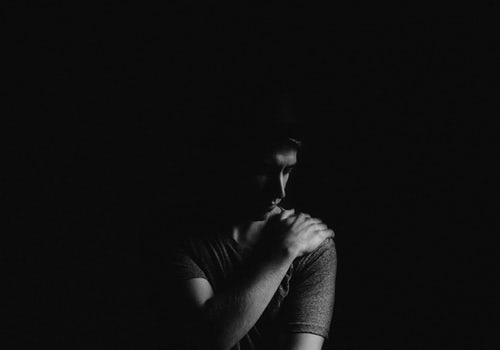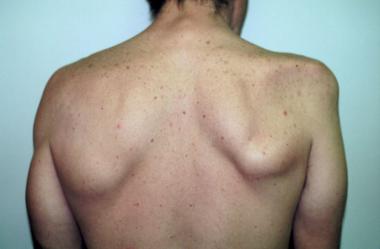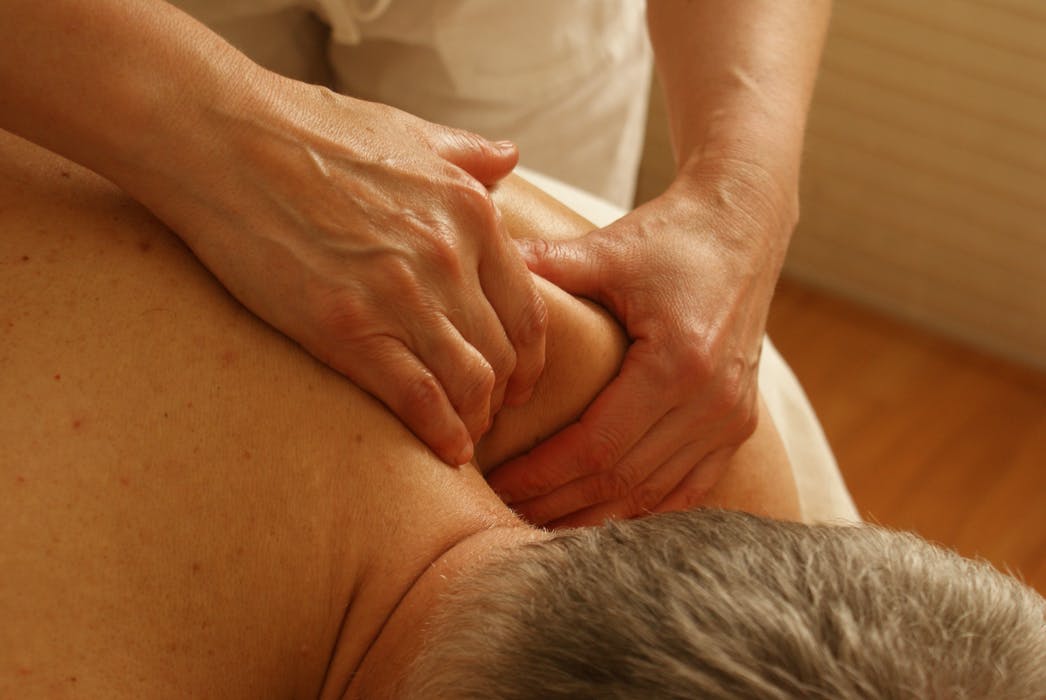|
BOOK NOW |
ASK ABOUT YOUR PAIN |
Home > Blog > Physiotherapy > Conditions > Shoulder Pain > Left Shoulder Pain > Brachial Neuritis Physiotherapy
Brachial Neuritis Physiotherapy

Brachial neuritis refers to a very specific and equally rare condition where there is inflammation of the group of nerves that control our shoulder, arm and hand, collectively it is known as the brachial plexus.
Often patients with this specific condition find it very frustrating and annoying because it is difficult to diagnose accurately and causes severe shoulder pain followed by weakness. What's worse is that its symptoms tend to develop quickly without any seemingly obvious reasons other than often starting at night and can be very very uncomfortable and unpleasant.
Brachial neuritis is also known as
- brachial plexopathy
- Parsonage Turner Syndrome and
- neuralgic amyotrophy
In this article we will study and discuss
- what happens with brachial neuritis
- the different types, what causes it
- common symptoms
- treatment options
- recovery process
first of all...What Is Brachial Neuritis?

Our brachial plexus is a complex complicated network of intertwined nerves that
originate from the root of the neck, travels downwards to pass across the chest over the
first rib, through the arm pit (axilla) and then downwards into the arm.
It is made up of the lower four cervical nerves (C5-8) and the uppermost thoracic nerve (T1) and it directly controls movement and sensation in the
- shoulder
- arm and
- hand
Nerves carry electrical impulses, information and signals from one part of the body for another.
They carry messages from the brain telling muscles to contract or relax to produce movement as well as carrying sensory information regarding e.g. touch and temperature.
In the case of brachial neuritis, the brachial plexus becomes inflamed and the nerves don’t function normally normally leading to a combination of motor and sensory issues including pain and weakness.
There are two different types of brachial plexopathy:
1) Inherited Brachial Neuritis
This is an inherited condition where there is a mutation in the SEPT9 gene on chromosome 17q and it is an autosomal dominant condition. This means that a parent who carries the gene has a 50% chance of passing the faulty gene onto any child they have.
2) Idiopathic Brachial Neuritis
This is the most common type.
The exact cause is unknown but doctors/research community believes that it is due to an abnormality in the immune system which causes it to attack the nerve fibres of the brachial plexus resulting in inflammation.
Causes Of Brachial Plexopathy
Whilst the exact cause of brachial neuritis is unknown, the condition has been linked to:
- Infections: Either viral e.g. upper respiratory tract infection or bacterial e.g. pneumonia
- Post-surgery complications
- Traumatic injuries: which can happen anywhere in the body and not necessarily to the shoulder
- Vaccinations: e.g. flu jab and tetanus jabs
- Child birth and delivery
- Systemic Illness e.g. lymphoma and cancer
Brachial plexopathy is a rare condition affecting between 1-3 people per 100,000 individuals per year (that's a rate of 0.00001-0.00003% probability).
Symptoms of Parsonage Turner Syndrome
Brachial neuritis symptoms typically develops fairly quickly and rapidly, and most patients report that it often starts at night time. Pain tends to be the first symptom which then follows up with weakness and/or paralysis.
Common symptoms include:
1) Pain
A common symptoms of brachial neuritis is sudden, severe pain.
Our patients tends to describe the pain as
- sharp pain
- stabbing pain or
- burning pain
in the shoulder which may spread to the neck, arm and/or hand.
It usually affects one shoulder (most commonly the right or dominant side) but in some patients, it can affect both shoulders at the same time.
Typically the
pain usually gets worse with any movement of the arm and at night. Most patients report that their pain tends to be constant i.e. present every second of every minute and
only eases with strong painkillers
2) Weakness

As the pain subsides (this may take days or weeks) patients will notice that they start to experience muscle weakness and/or paralysis.
They start to notice a weakness first and then they find that their affected muscles begins to waste (known as atrophy) which is often visible, such as a winging scapula (see the picture), and this can make it very hard for them to lift and move the affected arm.
The weakness may be challenging, but fortunately most are usually temporary (short termed).
3) Numbness
If the sensory nerves are affected than your sensation is altered and you may notice some
- numbness
- pins and needles and/or
- decreased sensation
4) Difficulty Breathing
In some cases (up to 5%) the diaphragm is affected which can lead to shortness of breath
5) Age Group
Can affect people at any age (including children which usually
indicates the inherited version), but it is most common in
younger ormiddle-aged adults
6) Gender
Idiopathic brachial neuritis is more prevalent in males, approximately 3:1. Inherited brachial plexopathy affects males and females equally
Diagnosing brachial neuritis
Brachial neuritis can be hard to diagnose and is often misdiagnosed as neck pain or a neck problem.
Your doctor and/or our senior physiotherapists will start by taking your medical history, understanding your pain experience and then will examine you, looking first at your arm movements and followed with assessing your muscle strength.
They may also check your reflexes and sensation.
Your doctor will possibly send you for imaging studies such as an MRI to rule out other conditions such as
You may even do a shoulder x-ray.
Nerve conduction studies or EMG tests looking at the electrical activity of muscles may also be done to see if the nerves are conducting and functioning correctly. This helps to identify whether the weakness is due to a problem in the muscles themselves or a problem with the nerves that control the muscles, the latter of which may indicate parsonage turner syndrome.
what are your Treatment Options?
The initial goal with brachial neuritis is to pain relief. Then, we can work on shoulder and nerve physiotherapy.
1) Medication
Pain can be quite severe and constant with brachial plexopathy and
you may need strong painkillers to cope in the beginning, which may include NSAIDs, opiates and others.
2) Shoulder & Neck Physiotherapy
Initially, you will be advised to rest until your pain is under control, but then it is important to start physical therapy to address the associated muscle weakness and loss of movement.
Our goal of
physical therapy is to:
a) Maintain and Improve Range of Movement:
In the beginning, the range of motion exercises may be entirely passive exercises (when the arm is moved without the muscles having to work), either by someone else moving your arm, or you using your good arm to support the arm and lead the movement.

Once the pain is under control you can then move to active range
of movement exercises (where you perform the movement yourself with the
affected arm).
b) Regain Strength:
Once the pain is manageable, then together with you, our senior physiotherapists can start rotator cuff strengthening exercises and scapular stability exercises to regain the strength and control around the shoulder.
We may also use treatments such as
- cold therapy
- heat packs and/or
- TENS machines
(transcutaneous electrical nerve stimulation)
to help relieve pain. Patients may also receive the following physiotherapy treatment modalities:
- cold therapy
- heat therapy
- moist heat paraffin wax therapy
- radio-frequency Indiba physiotherapy to accelerate soft tissue healing
- joint mobilization
- stretching exercises
- strengthening exercises
- scar management
- hands on manipulation and mobilization (manual therapy)
- soft tissue management
- heat therapy and heat treatment and heat pack to relief tight muscles and joints
- ultrasound therapy to accelerate soft tissue healing
- exercise therapy
- acupuncture and/or dry needling
- deep tissue release
- and more
3) Surgery
If symptoms fail to settle after a number of months, your doctor may recommend you to consider corrective surgery.
This usually consists of nerve grafts and/or tendon transfers (where healthy sections of nerves or tendons are taken from elsewhere in the body and used to repair the damaged nerves/tendons) to restore muscle function
Recovering from brachial neuritis
Recovery from brachial neuritis varies between patients to patients but in most cases most patients can make a full, or nearly full recovery.
Typically the neurological pain settles within a few weeks, but it can take a number of months to regain full strength and range of motion at the shoulder.
Around 80% of people who suffer from brachial plexopathy will make a full recovery within 2 years, with another 10% recovering further in the following year.
In some cases, some patients may will be left with lingering
- persistent pain
and/or
- weakness and/or
- reduced endurance in the shoulder muscles
Recovery time is often linked to how long the painful phase lasts (longer painful phase = longer recovery time).
Recovery from parsonage turner syndrome tends to take longer if symptoms happens in both arms at the same time (termed as "bilateral").
Recurrence is more common with inherited brachial neuritis (approximately 75% recurrence rate) as compared to idiopathic brachial plexopathy (between 5-26% recurrence).
Reference